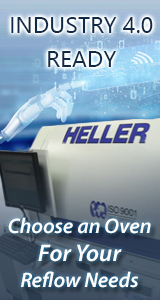Current-To-Pneumatic Converter
Current-To-Pneumatic Converter is also called Current to Pressure converter converts an analog signal (4 to 20mA) to proportional linear pneumatic output (3 to 15 psig). Its purpose is to translate the analog output from a control system into a precise, repeatable pressure value to control pneumatic actuators/operators, pneumatic valves, dampers, vanes, etc.
The I/P converter provides a reliable, repeatable, accurate means of converting an electrical signal into pneumatic pressure in many control systems. Models of this device are usually available in direct and reverse action and are field selectable with full or split range inputs or outputs as the case may be.
The most common application of an I/P converter is to receive an electrical signal from a controller and produce a proportional pneumatic output for operating a control valve or positioner. The device can be mounted on the wall or a pipe stand or directly on the valve actuator. Where the device can withstand vibrations, they are directly mounted on the valve actuator. In many instances, the device is remotely mounted on instrument pipe stands to reduce vibrations.
I/P converter uses an electromagnetic force balance principle to change electrical signals into pneumatic signals. Typically, a 4-20 mA input is converted into a 3 – 15 psig output.
A coil produces the magnetic field. Within the coil is a deflector motor with a flapper valve attached that operates against a precision nozzle to create backpressure on the servo diaphragm of a booster relay. The input current flows in the coil and product a force between the coil and the flapper valve, which controls the servo pressure and the output pressure.
Zero adjustments of this device are made by turning a screw that regulates the distance between the flapper valve and the air nozzle. Span adjustment is made by varying a potentiometer, which shunts input current past the coil. The output signal of an I/P converter easily falls to bleeds pressure upon failure of the electrical signal. This makes it easy to detect electrical failure signal in the device.
Most I/P converters are supplied instrument air of about 20psig above the required output of the device. An inoperative or poorly performing I/P converter may just be having a problem with its air supply. So, to effectively troubleshoot this device, slightly open the air set drain and check that the supply air is dry and oil-free. Checks can also be made on an external bleed opening to verify that it is clear and free from obstruction and that it is venting properly.
I/P Converter is available through Quick Time Engineering Inc.
Quick Time Engineering Inc is an international company with offices and distribution networks in the USA, Hong Kong, Europe and Malaysia.
In its 20 years of operation since 1998, Quick Time Engineering Inc had emerged from a local engineering company with a single staff that provided solutions in factory automation to become nowadays a company that serves the Oil & Gas industries, EPC contractors, System Integrators and other industrial automation and process control companies worldwide. Customers from over 50 countries worldwide trust us with their need for process control instruments and industrial automation products.
For more information about Quick Time Engineering Inc, visit www.quicktimeonline.com or email enquiry@quicktimeonline.com







